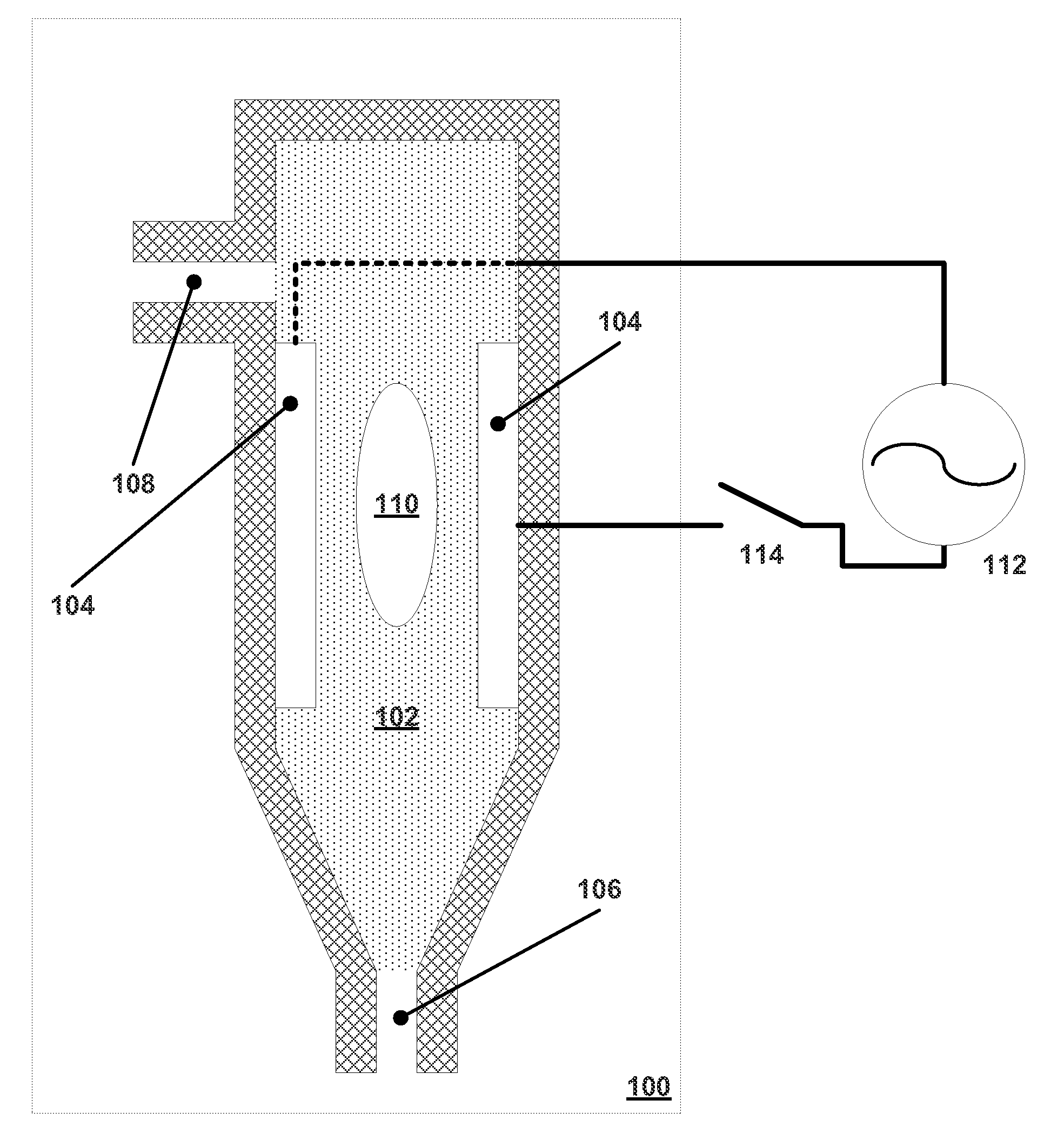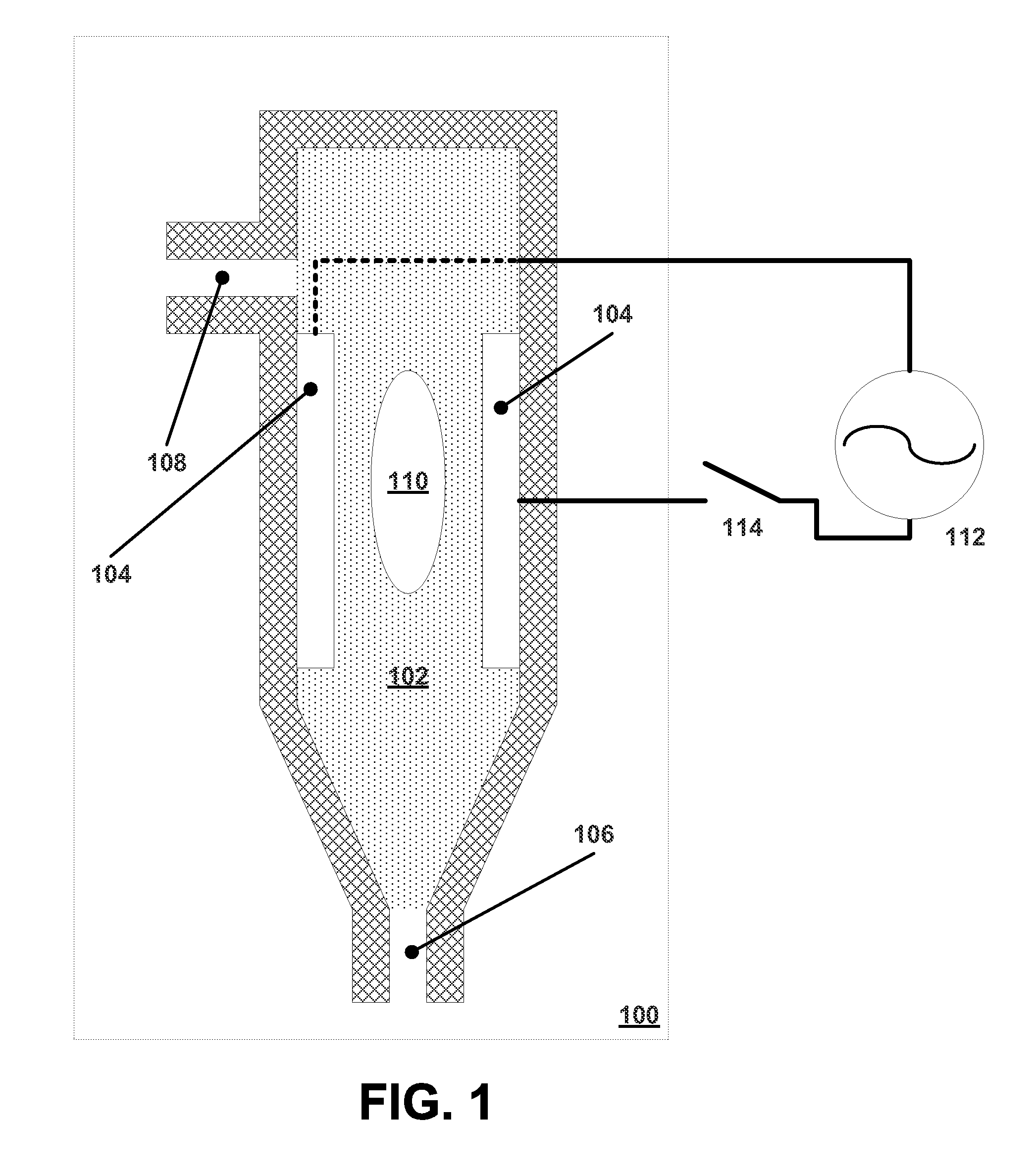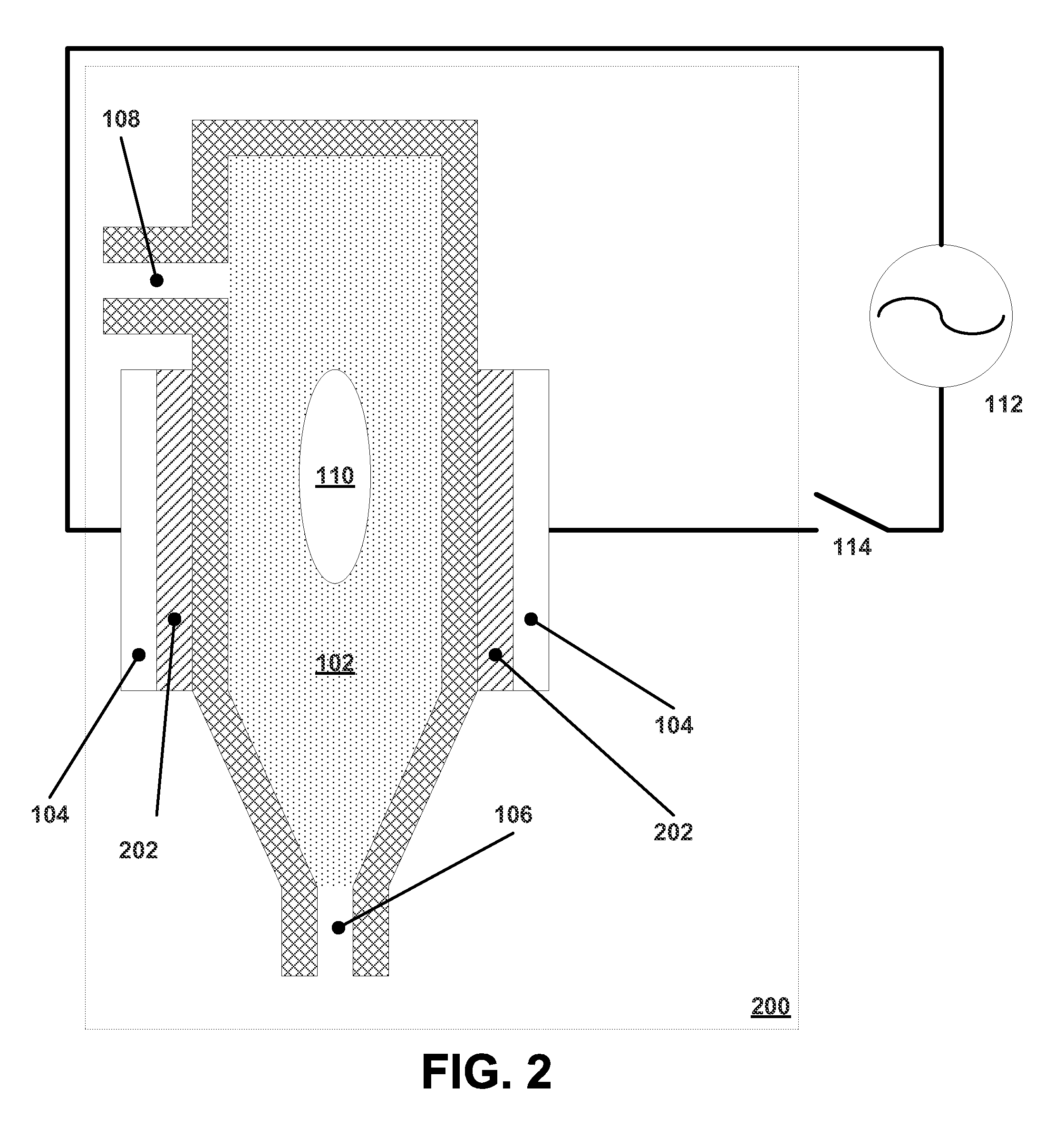Systems and methods for dielectric heating of ink in inkjet printers
- Summary
- Abstract
- Description
- Claims
- Application Information
AI Technical Summary
Benefits of technology
Problems solved by technology
Method used
Image
Examples
Embodiment Construction
[0016]A detailed description of embodiments of the present invention is presented below. While the disclosure will be described in connection with these drawings, there is no intent to limit it to the embodiment or embodiments disclosed herein. On the contrary, the intent is to cover all alternatives, modifications and equivalents included within the spirit and scope of the disclosure.
[0017]FIG. 1 illustrates a basic dielectric ink nozzle. Dielectric nozzle 100 comprises ink reservoir 102, conductive plates 104, nozzle 106, and ink cartridge intake 108. An alternating current is applied to conductive plates 104, and depending on the frequency of the current, the water in the ink will heat. Frequencies between 1 GHz and 20 GHz are known to cause water to heat. This can be supplied by a signal generator such as signal generator 112 and activated by switch 114. When sufficient heating occurs, the fast vaporization known as explosive nucleation takes place causing bubble 110 to form. Th...
PUM
 Login to View More
Login to View More Abstract
Description
Claims
Application Information
 Login to View More
Login to View More - R&D
- Intellectual Property
- Life Sciences
- Materials
- Tech Scout
- Unparalleled Data Quality
- Higher Quality Content
- 60% Fewer Hallucinations
Browse by: Latest US Patents, China's latest patents, Technical Efficacy Thesaurus, Application Domain, Technology Topic, Popular Technical Reports.
© 2025 PatSnap. All rights reserved.Legal|Privacy policy|Modern Slavery Act Transparency Statement|Sitemap|About US| Contact US: help@patsnap.com



